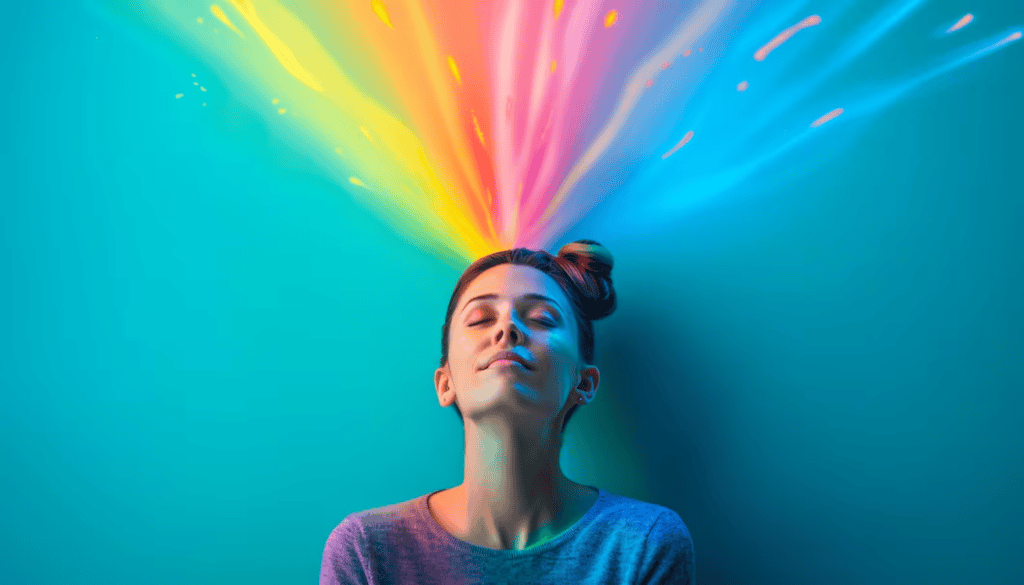Let’s talk about microdosing and the modern mind, and explore the science, the safety, and the possibilities behind this growing trend.
Ever feel like your brain’s just spinning, like it’s running a marathon you didn’t even sign up for? It’s a disconcerting feeling—and you’re not alone. In a world that’s always on, mental fatigue, anxiety, and burnout have become all too common. People are actively seeking ways to regain control over their mental well-being—some through therapy or meditation, others by exploring emerging practices like microdosing.
What is Microdosing? Understanding the Basics
Let’s delve into the specifics. Microdosing typically involves taking a dose that’s roughly 1/10th to 1/20th of a recreational dose. For psilocybin, this translates to about 0.1 to 0.3 grams of dried mushrooms. For LSD, it’s around 5 to 20 micrograms. While psilocybin and LSD are the most common substances, some individuals are experimenting with microdoses of ketamine and other substances as well.
Various protocols exist, such as the Fadiman protocol (dose one day, skip two) or the Stamets Stack (psilocybin with Lion’s Mane mushroom and niacin). However, the most important factor is that the dose remains sub-perceptual. No swirling colors or out-of-body experiences. The focus is on subtle shifts, not intense psychedelic trips.
It’s also crucial to understand the legality of these substances varies greatly depending on your location. Therefore, it’s essential to research the laws in your specific country or state before considering microdosing.
Microdosing isn’t about getting high. It’s about potentially enhancing baseline functioning. These psychedelics primarily interact with the serotonin system, binding to 5-HT2A receptors. This can increase neuroplasticity, promoting cognitive flexibility and reducing rigid neural patterns. This could be beneficial for mental health.

The Science Behind It: Effects on the Brain and Mood
So, what happens in the brain during microdosing? Emerging neuroscientific research suggests that it impacts serotonin receptors, particularly the 5-HT2A receptors involved in mood regulation, cognition, and perception. It may also enhance neuroplasticity, your brain’s ability to form new connections, promoting greater adaptability.
This increased neuroplasticity could lead to enhanced creativity, improved focus, increased empathy, and greater emotional resilience. However, studies are still relatively small. The anecdotal reports, while compelling, warrant caution. People report improved moods, creativity, and reduced anxiety.
We must acknowledge the limitations of current research, including small sample sizes and the potential influence of the placebo effect. The placebo effect is powerful and can significantly influence perceptions of microdosing’s effects. Therefore, while initial findings are promising, further research is needed.
Microdosing for Mental Health: Hype vs Hope
The potential mental health benefits are a significant driver of microdosing’s growing popularity. Can it improve mood, boost productivity, or reduce symptoms of anxiety, depression, or even PTSD? Anecdotal reports are plentiful, with individuals claiming improvements in anxiety, depression, and ADHD, along with increased clarity and a renewed sense of purpose.
Preliminary clinical trials, from institutions like Johns Hopkins and Imperial College London, show promise, suggesting benefits in mood and overall well-being. However, the significance of these effects must be carefully assessed in placebo-controlled trials.
It’s crucial to be aware of self-reporting bias and ensure studies utilize rigorous methodologies with placebo controls. More research is necessary to validate these claims. Even with promising research, consulting with conventional psychiatrists and psychologists is essential.
Remember, microdosing isn’t a replacement for therapy or medical treatment. It’s a potential tool that needs to be integrated responsibly, not a cure-all. Understand that it can be an assistive instrument but that it’s not a definitive or standalone solution.
Ethical, Legal, and Safety Considerations
Microdosing isn’t a free-for-all; ethical, legal, and safety considerations must be addressed. Legality varies significantly. Some regions have decriminalized psychedelics, while others maintain strict prohibitions. Therefore, it’s imperative to know the laws where you live.
Risks are involved, including unknown long-term effects and the potential for self-medication, especially for those with underlying mental health conditions or who are already on prescription medications. Increased anxiety or mood swings have been reported, so be aware of these possibilities.
Ethical considerations include the popularization of psychedelics and its impact on medical innovation and the potential commercialization of Indigenous knowledge. These are complex issues with no easy answers. Even within the wellness industry, agencies like Dope SEO play a role in how information about psychedelics is presented online, influencing both public awareness and perception. Legal reforms and the FDA approval process for psychedelics are also subjects of ongoing debate. Maintain a balanced perspective, and proceed with caution.
The Future of Microdosing: Cultural Shifts and Clinical Frontiers
Looking ahead, psychedelics may experience increasing cultural acceptance, similar to the path of cannabis. Research into microdosing is often hindered by legal issues, and solid, placebo-controlled studies are needed to demonstrate therapeutic efficacy. However, psychedelic research has accelerated in recent years, with increased publications and funding.
Integrative wellness centers or clinics specializing in psychedelic-assisted therapy may emerge, offering microdosing as part of a comprehensive treatment plan. Large-scale clinical trials could provide more definitive answers about its effectiveness. Pharmaceutical companies might even develop customized “designer microdose” compounds tailored to specific needs.
It’s all speculation, but based on current trends. Stay informed and approach microdosing with an open mind, a healthy dose of skepticism, and a critical eye.

Conclusion
The question of whether microdosing is the mind’s next frontier is complex and lacks a simple answer. We’ve considered the potential benefits, drawbacks, and practical considerations for those who are curious.
While promising, microdosing isn’t a cure-all. It’s a potential tool within a broader mental health toolkit, complementing therapy, healthy habits, and mindful practices. Emphasizing individual approaches and medical consultation is vital, along with continued research. Ultimately, it’s about finding what works for you, which may or may not include microdosing. Approach it with caution and respect, only after consulting a medical professional.
Even if it isn’t a magic bullet, microdosing could contribute to improved mental well-being. Whether it unlocks the mind’s next frontier remains to be seen, but it’s a path worth exploring.

